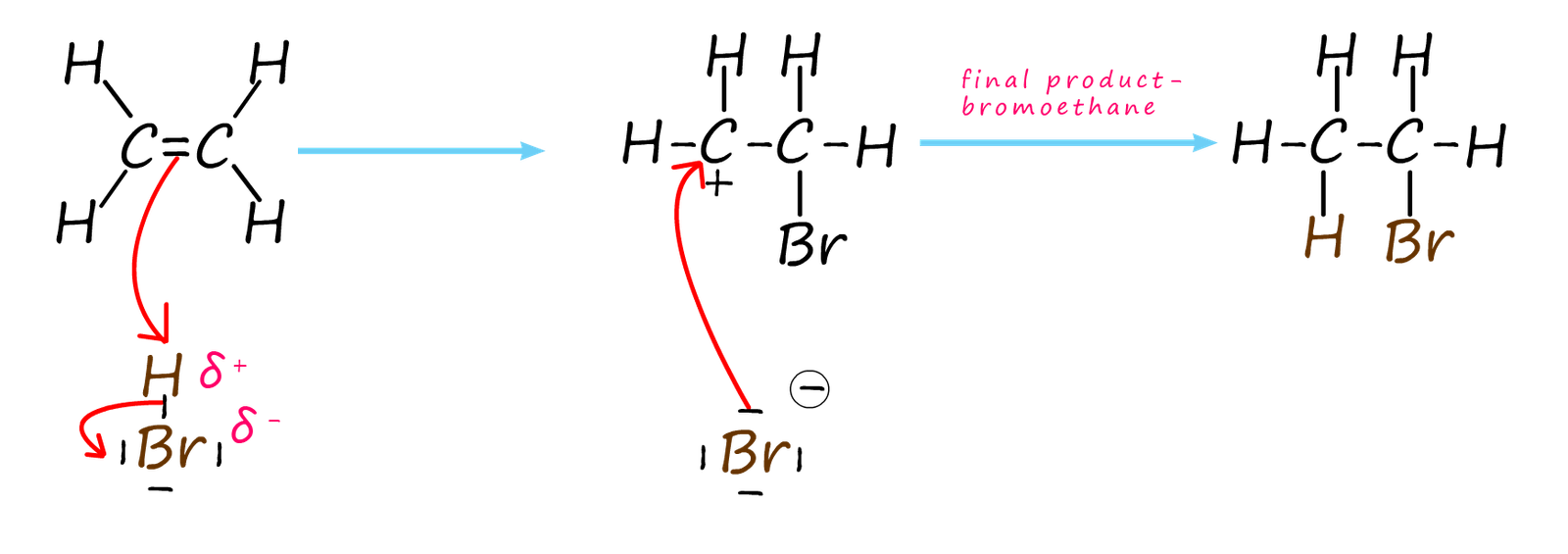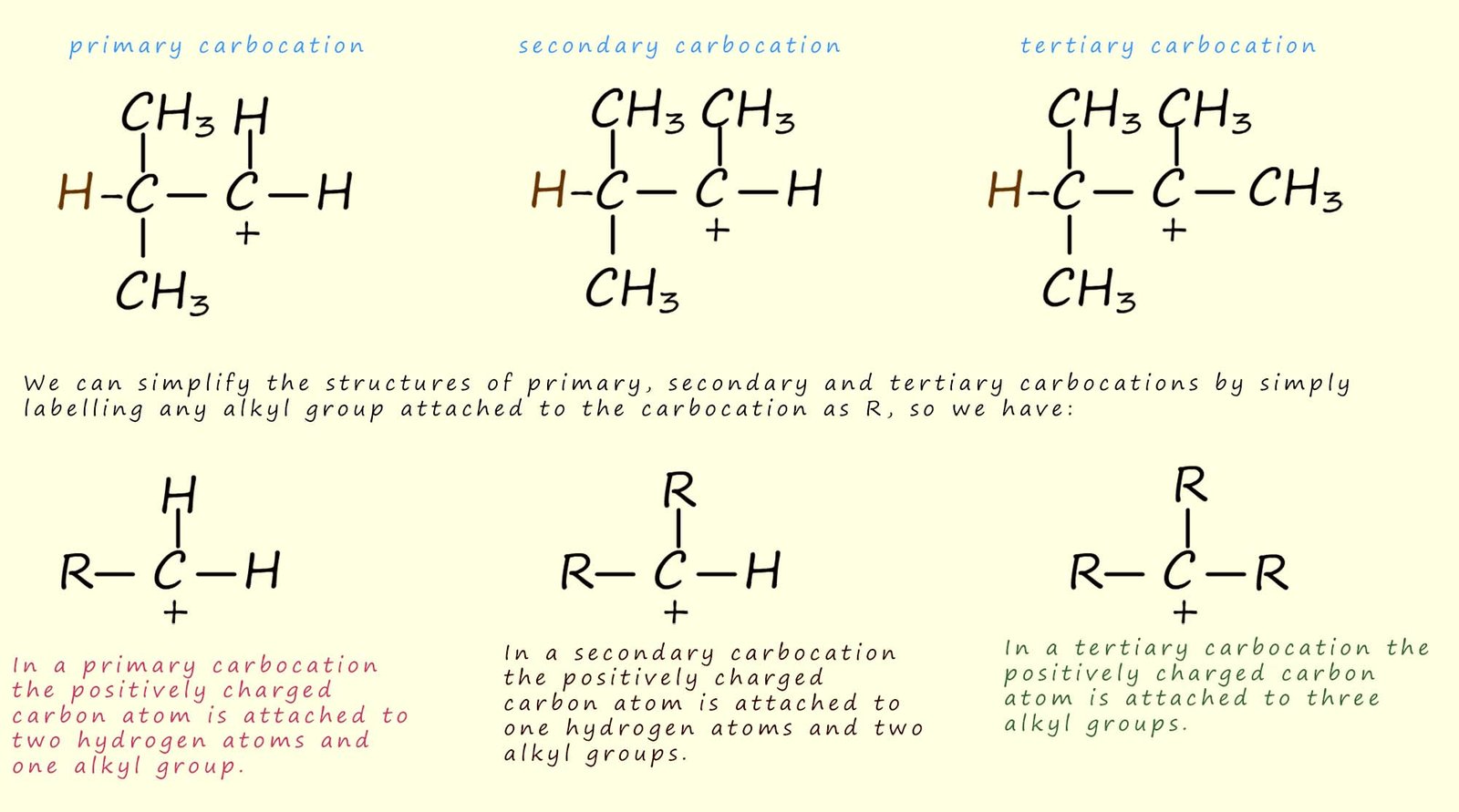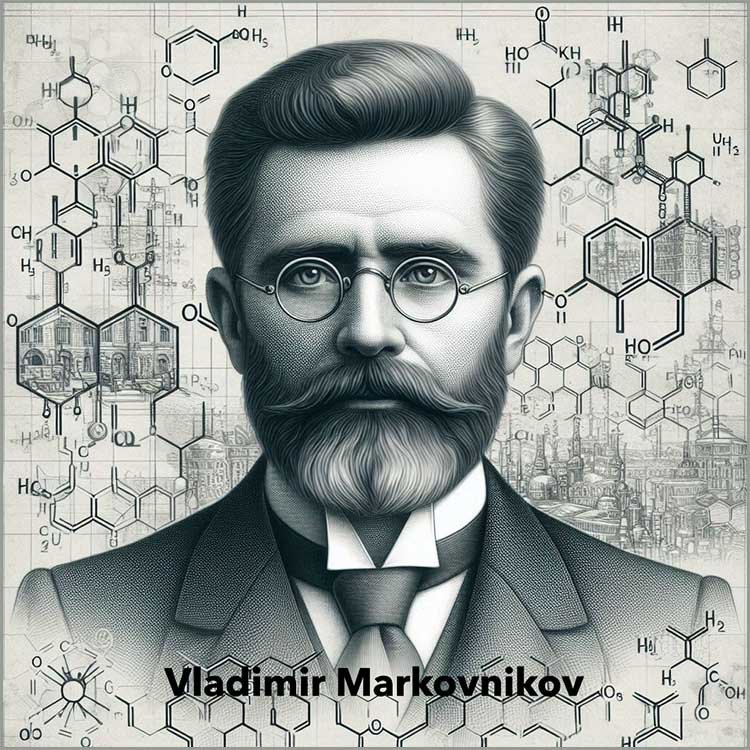

Electrophilic Addition reactions involving alkenes always proceed via the same mechanism:
An example of a typical electrophilic addition reaction involving an unsaturated alkene molecule is shown in the image below. Here the
electrophile is the
partial positively charged hydrogen atom (δ+) in a molecule
of hydrogen bromide. This is attacked
by the pi electrons in the carbon carbon double bond (C=C) of the alkene, this results in the formation a carbocation
(which is itself an electrophile) and a negatively charged bromide ion. This
bromide ion then uses one
of its lone pairs of electrons to form a covalent bond to the
positively charged carbocation, that is it is acting as a
nucleophile. This is outlined below:
 Depending on which alkene molecule
you start with the intermediate carbocation formed could be a primary,
secondary or tertiary carbocation as shown below:
Depending on which alkene molecule
you start with the intermediate carbocation formed could be a primary,
secondary or tertiary carbocation as shown below:

In the first example above a molecule of hydrogen bromide adds to the
unsaturated alkene ethene, now ethene is a symmetrical
molecule and
it makes no difference to the final product which carbon atom in the molecule
ends up forming the intermediate
carbocation.
However if we had started with an unsymmetrical alkene such as 2-methylpropene-2-ene as shown below then
it does make a difference to the final product of the reaction which of the carbon atoms in the carbon carbon
double bond (C=C) ends up forming the intermediate carbocation.
In the example shown below a molecule of
hydrogen chloride gas
adds to our unsymmetrical alkene molecule.
Addition of the hydrogen from the
hydrogen chloride molecule to the unsaturated molecule can in
theory result in the formation of two intermediate carbocations.
One of the carbocations is an unstable primary carbocation
and the other
is a relatively stable tertiary carbocation.

However the 1-chloro-2-methylpropane, one of the possible products of the electrophilic addition
reaction is NOT produced. Why is this?
The simplest explanation is that the intermediate carbocations shown in the mechanism above are not all
equally stable and so some will require more
energy to form than others, that is they will have a higher activation energy and more energy will be required
to form them.
Primary carbocations are much less stable than secondary
carbocations which in turn are less stable than tertiary
carbocations. One possible explanation for this is due to
the inductive effect of alkyl groups. Alkyl groups appear to "push" or
release electrons towards carbocations and
so help stabilise the positive
charge on the carbon atom. Obviously the more alkyl groups the stronger this inductive effect
will be and the more electron density will be "pushed" towards the carbocation which
should help stabilise it.

So in our example above only one product; the 2-chloro-2-methylpropane is produced. The reason is that this compound is formed by a route that has as an intermediate a relatively stable tertiary carbonium ion whereas the other product; the 1-chloro-2-methylpropane is formed via the unstable primary carbonium ion.
By studying many electrophilic addition reactions the Russian chemist Vladimir Markovnikov
suggested that in the addition of hydrogen
halides to unsaturated alkene molecules the electrophilic
hydrogen becomes attached to the carbon atom with the fewer alkyl substituents.
We
could also express Markovnikov rule by saying that in the addition of HX to
an alkene the more substituted carbocations are
more likely to form as intermediates, since the more substituted the carbocation the more stable it will be.
In the example above using HCl and 2-methylprop-2-ene the reaction can proceed via either a tertiary or a primary carbocation. The tertiary carbocation being much more stable than the primary carbocation resulted in the formation of only one product. However if we start with the unsaturated alkene hex-1-ene rather than 2-methylprop-2-ene then the addition of hydrogen chloride gas will produce as an intermediate a primary and a secondary carbocation. This time the reaction will produce a mixture of two products; 1-chloropentane and 2-chloropentane as shown in the image below. The major product will be the 2-chloropentane since it is produced by the more stable secondary carbocation will the minor product will be the 1-chloropentane since it is produced from the less stable primary carbocation.
